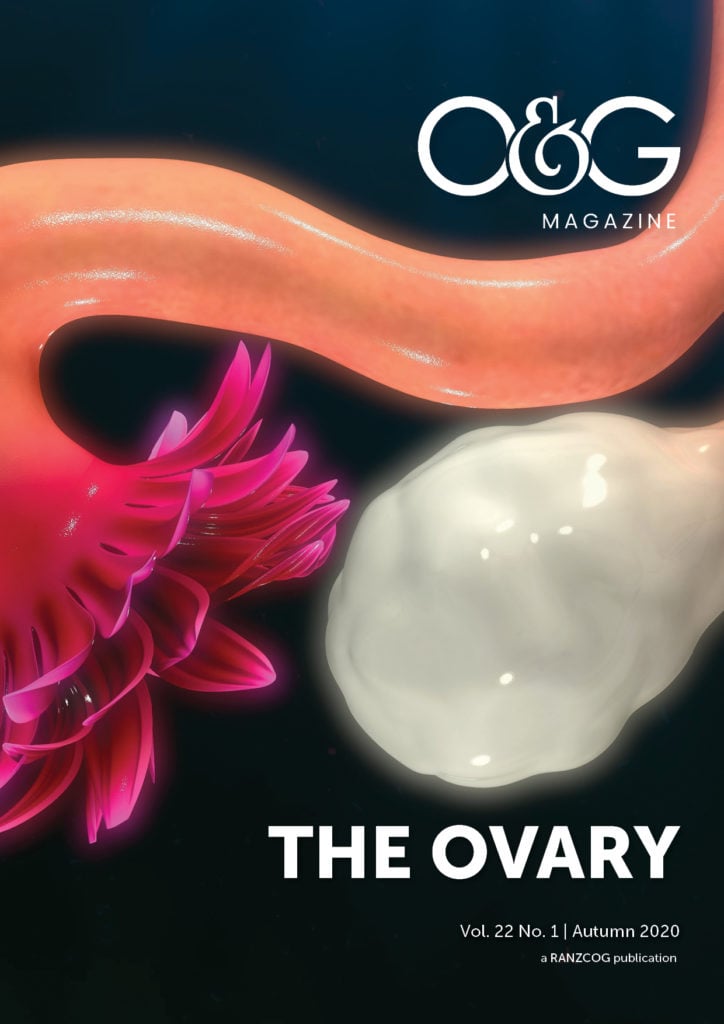The incidence of new cancers has stayed static in children, adolescents and young adults (AYAs) over the last three decades and advancement in medical therapies has led to increasing five-year survival rates for all cancers, meaning many more are surviving into adulthood and having the opportunity to have children. Many consider fertility to be a fundamental right and although the option of donor gametes exists, due to technological advancements in cryopreservation techniques, many more now desire to preserve their own gametes to use to conceive later in life. Many cancer therapies can be irreversibly gonadotoxic, so consultation with a fertility specialist for any individual regarding their fertility preservation options, prior to their chemoradiotherapy, is integral to the standards of care for AYA Cancer Network Aotearoa. Due to the evolution of oocyte and ovarian tissue cryopreservation techniques and increasing demand, fertility preservation is a rapidly evolving area in the field of reproductive endocrinology and infertility.
Oocyte cryopreservation
More than 3000 babies have been born worldwide from cryopreserved oocytes and with the advent and refining of the method of vitrification, oocyte freezing has shifted from an experimental to realistic option for future fertility preservation.
New Zealand Assisted Reproduction Technology (ART) providers are governed by the HART Act 2004, which initially did not include oocyte and ovarian tissue cryopreservation as established and permissible procedures, as both were still experimental at that time. The Advisory Committee on Assisted Reproductive Technology (ACART) was formed to hold public consultation, assess risks and advocate for new emerging technologies to amend ART legislation over time. ACART submitted a letter to the health minister for oocyte cryopreservation and utilisation in 2008 and legislation was amended to permit and allow oocyte cryopreservation and utilisation in 2009.
Oocyte freezing is currently permissible in NZ in women 16 years and older, with storage for a maximum of ten years, although storage after 10 years is usually permitted on a case-by-case basis. Publicly funded fertility preservation is inclusive of oocyte cryopreservation but only for AYA’s and women up to 40 years with cancer necessitating gonadotoxic treatment. Otherwise, non-medical indications are deemed elective and are privately funded. The utilisation of these frozen gametes later is only publicly funded if the woman or her partner has proven infertility, is under 40 years, has a BMI below 32, is a non-smoker and has no children.
Cryopreservation of oocytes involves ovarian stimulation for 10–14 days, oocyte collection and cryopreservation prior to gonadotoxic treatment, then later utilisation with a male partner’s sperm or sperm donor through intracytoplasmic sperm injection (ICSI). Oocytes are frozen at Metaphase II (MII) stage when both nuclear and cytoplasmic maturation has occurred, and ovarian stimulation medications are only able to recruit and mature small cohorts of 10–30 primary and secondary follicles to MIIs in post-pubertal ovaries.
Cryopreservation halts all biological and physiological activity of the cells and efficacious cryopreservation methods aim to preserve intracellular structures, DNA integrity and restore normal cellular function after the freeze-thaw process. Pregnancies from frozen sperm were first reported in the mid-1950s and from frozen embryos in the 1980s. Oocyte cryopreservation has been more difficult due to several inherent oocyte issues, requiring new technological advancements in ART to overcome. Cryopreservation of oocytes creates hardening of the zona pellucida, causing failure of fertilisation with conventional in-vitro fertilisation (IVF). ICSI overcame this and was a major evolutionary step in ART in the late 1980’s. Oocytes are one of the largest cells in the human body with a high water content. The older slow-freeze method is a slow, stepwise reduction in temperature, whereas vitrification is an ultra-fast, sudden reduction in temperature. When undergoing slow-freeze cryopreservation, intracytoplasmic ice crystals form within oocytes and confer poorer survival (45–75%) and fertilisation rates (54-67%) compared to vitrified oocytes (82–91% survival, 77–83% fertilisation rates).1 2 3
Cryopreserved oocytes have lower chances of pregnancy compared to embryos, but higher chances compared to ovarian tissue. So, many more oocytes, compared to embryos, need to be frozen to give a reasonable chance of a livebirth later in life, and there are no guarantees that any cohort of oocytes will achieve a child. The younger the woman at the time of egg retrieval and freezing, the higher the chance of pregnancy per oocyte. Livebirth rates per oocyte have been reported as 7.5–10% in women 30 or younger, 7–7.5% in 35-year-olds and 5% in women of 40 or older.4 5 The largest retrospective observational study compared pregnancy outcomes in 6362 women and found no significant difference in oocyte survival or cumulative live birth rates between those who froze oocytes for cancer or electively.6 Reassuringly, the largest report on neonatal outcomes in more than 1000 children born from frozen oocytes has shown no increase in perinatal and neonatal morbidity.7
Low utilisation rates and, therefore, cost effectivity are the more controversial aspects to oocyte cryopreservation. Utilisation rates are the proportion of women returning to use their frozen gametes and are lower (5%) for cancer indications8 compared to 6–13% for non-medical, elective indications.9 10 This probably mostly relates to the younger age of those undergoing egg freezing for cancer, compared to non-medical indications, where they have yet to reach the age where they are ready to have children, and less so from lack of gonadotoxicity from their cancer treatment or non-survival from their cancer.
Ovarian tissue cryopreservation
Prepubertal girls or those with insufficient time to undergo 10–14 days of ovarian stimulation, oocyte retrieval and cryopreservation before starting their gonadotoxic therapy, are by default left with ovarian tissue cryopreservation to preserve their fertility using autologous tissue.
The first baby born from reimplanted cryopreserved ovarian tissue was reported in Belgium in 2004 and more than 100 babies have been born worldwide from this method since, so it is no longer considered experimental. Ovarian tissue freezing is permissible by legislation in NZ but is not a publicly funded fertility preservation option. Surgical excision typically occurs in the public hospital where they receive their oncology treatment, so only ovarian tissue preparation and cryopreservation needs to be privately funded. There are more than 50 ovarian tissue samples currently stored in NZ and usage via autologous ovarian tissue reimplantation is currently not permissible in NZ. However, a letter to the health minister was submitted by ACART to amend legislation to allow ovarian tissue reimplantation to be a permissible therapy in 2017 but at the time of writing, legislation has yet to be amended.
Surgical removal of ovarian tissue is usually performed laparoscopically at the time of a peripheral long- or central-line placement under general anaesthesia. Our embryologists collect and transport the tissue back to the laboratory where they prepare the ovarian cortex tissue into strips, insert them into cryostorage devices and then slow-freeze them. Various reimplantation techniques are being explored globally in order to optimise graft survival and restore hormonal production and reproductive function. Dr Dror Meirow, former President of the International Society for Fertility Preservation (ISFP), advocates reimplantation of the ovarian tissue back into the ovarian bed or remnant (orthotopic transposition) to utilise the existing vasculature and ovarian infrastructure, to permit physiological ovulation and natural conception, and not necessitate IVF as does heterotopic transposition (that is, forearm site). Meirow describes promising reproductive outcomes in the largest series of 21 women under 35 years of age undergoing ovarian tissue reimplantation; 21 (100%) had restored endocrine function and 10 (47.6%) had conceived at least once, half of which were natural conceptions.
Another concern regarding ovarian tissue reimplantation is potentially reintroducing cancer into the individual. Meirow’s group describes using all available technologies to investigate for residual malignancy cells in cryopreserved ovarian tissue before autologous reimplantation, including light microscopy and immunohistochemistry for cancer cells, cytogenetic analysis for any previously identified oncological gene mutation, next generation sequencing for common gene mutations implicated in the malignancy and xenotransplanatation into several mice with later sacrificing to ensure no malignancy cells are found in their tissues or blood.11
Controversially, consent for ovarian tissue cryopreservation more often than not is given by the parents/caregivers and not the individual, who is typically under the age of consent. It is akin to parents taking out a fertility insurance policy for their daughter; however, given use is so far untested in NZ, controversy also surrounds whether this should be a publicly funded fertility preservation procedure in NZ.
Conclusion
Advancements in cancer therapies, improved cancer survival and more women choosing to delay having their children is increasing the demand for fertility preservation and this is a rapidly evolving area of reproductive endocrinology and infertility. Legislation needs to be current with emerging ART techniques so as not to disadvantage NZ women and their right to reproduction.
References
- Glujovsky D, Riestra B, Sueldo C, et al. Vitrification versus slow freezing for women undergoing oocyte cryopreservation. Cochrane Database Syst Rev. 2014;Issue 9.CD010047.
- Rienzi L, Gracia C, Maggiulli R, et al. Oocyte, embryo and blastocyst cryopreservation in ART: systematic review and meta-analysis comparing slow-freezing versus vitrification to produce evidence for the development of global guidance. Hum Reprod Update. 2017;23(2):139-55.
- Kuwayama M, Vajta G, Kato O, Leibo SP. Highly efficient vitrification method for cryopreservation of human oocytes. RBMO. 2005;11(3):300-8.
- Cil AP, Bang H, Oktay K. Age-specific probability of live birth with oocyte cryopreservation: an individual patient data meta-analysis. Fertil Steril. 2013;100(2):492-9.
- Doyle J, Richter K, Lim J, et al. Successful elective and medically indicated oocyte vitrification and warming for autologous in vitro fertilization, with predicted birth probabilities for fertility preservation according to number of cryopreserved oocytes and age at retrieval. Fertil Steril. 2016;105(2):459-66.
- Cobo A, García-Velasco J, Domingo J, et al. Elective and Onco-fertility preservation: factors related to IVF outcomes. Hum Reprod. 2018;33(12):2222-31.
- Cobo A, García-Velasco JA, Coello A, et al. Oocyte vitrification as an efficient option for elective fertility preservation. Fertil Steril. 2016;105:755-64.
- Specchia C, Baggiani A, Immediata V, et al. Oocyte Cryopreservation in Oncological Patients: Eighteen Years Experience of a Tertiary Care Referral Center. Front Endocrinol. 2019;10(600):1-7.
- Doyle J, Richter K, Lim J, et al. Successful elective and medically indicated oocyte vitrification and warming for autologous in vitro fertilization, with predicted birth probabilities for fertility preservation according to number of cryopreserved oocytes and age at retrieval. Fertil Steril. 2016;105(2):459-66.
- Hammarberg K, Kirkman M, Pritchard N, et al. Reproductive experiences of women who cryopreserved oocytes for non-medical reasons. Hum Reprod. 2017;32:575-81.
- Shapira M, Raanani H, Barshack I, et al. First delivery in a leukemia survivor after transplantation of cryopreserved ovarian tissue, evaluated for leukemia cells contamination. Fertil Steril. 2018;109(1):48-53.






Leave a Reply